3 February, 2002
SHOVELING SNOW FOR POPS
The POPs team is filtering air and water samples to measure
persistent organic pollutants (POPs) that may be in this area. We have also
collected snow samples in the search for POPs. We have gone to two sites:
Old Palmer Station (which was the main station site in the mid to late 1960'
s) and Torgersen Island.
We have collected snow from each of these sites two different times. So, we
went to Old Palmer twice to get snow, and we went to Torgersen Island twice
for snow, also. Each time we have shoveled snow into two 60-liter
containers. We bring these containers back to the lab. The snow is melted,
and we get about 38 liters of water from each container. Then the melted
snow water is filtered just as we filter the water samples we take from the
ocean. The water is filtered under pressure through an XAD bead resin
column. The columns will be taken back to Virginia for analysis.
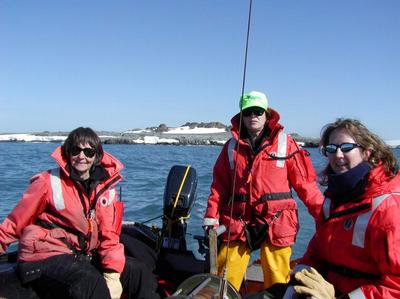
Sue Cowles, Michele Cochran, and Rebecca Dickhut on our way back from shoveling snow. (Photo by Hugh Ducklow)
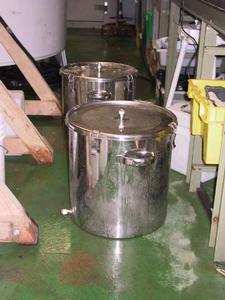
These are the pots into which we shovel the snow. Each pot holds 60 liters.
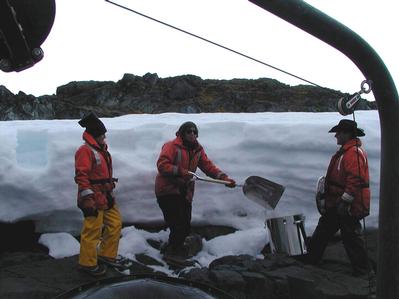
Michele Cochran, Sue Cowles, and Jeff Bechtel at Old Palmer. Notice the edge of the Zodiac at the bottom of the photo.
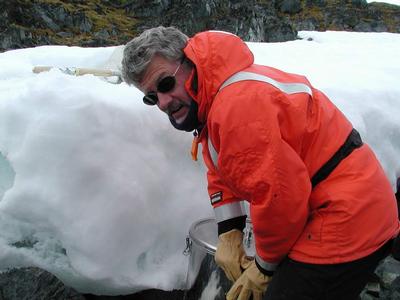
Hugh Ducklow shoveling snow at the Old Palmer site.
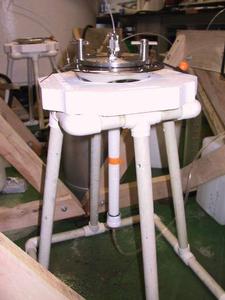
This is the filtering apparatus for water from the ocean as well as from melted snow.

Hugh Ducklow, Michele Cochran, and Rebecca Dickhut shoveling snow on Torgersen Island.

Hugh Ducklow and Michele Cochran take one of the containers down to the Zodiac. This is on Torgersen Island.
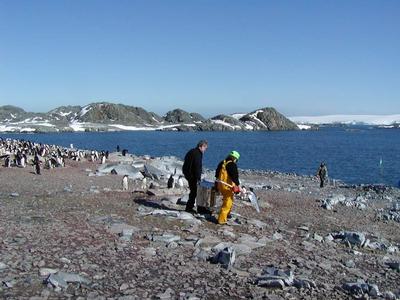
The penguins don't seem to be too interested in the snow collectors. Hugh Ducklow and Michele Cochran are in the foreground; Rebecca Dickhut is in the background. (Photo by Sue Cowles)
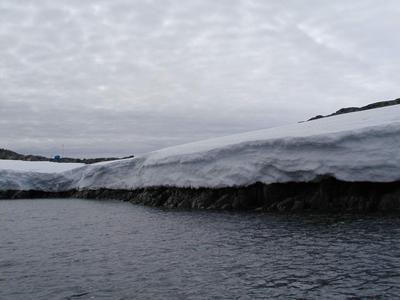
We did not go ashore at Old Palmer. We just shoveled from this snow bank into the containers while we were on the Zodiac. It is hard to tell how deep the snow is from this photo. You can see the blue cache barrels in the background, and they are about 3 feet high.
Contact the TEA in the field at
.
If you cannot connect through your browser, copy the
TEA's e-mail address in the "To:" line of
your favorite e-mail package.
|
